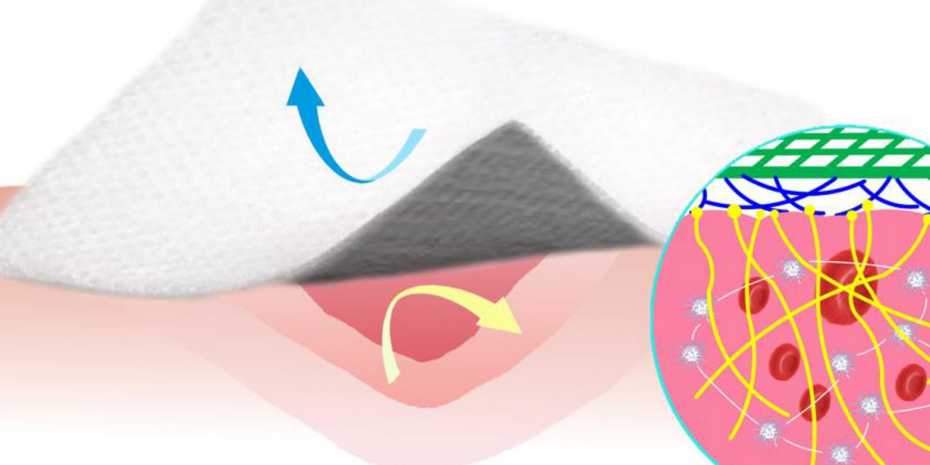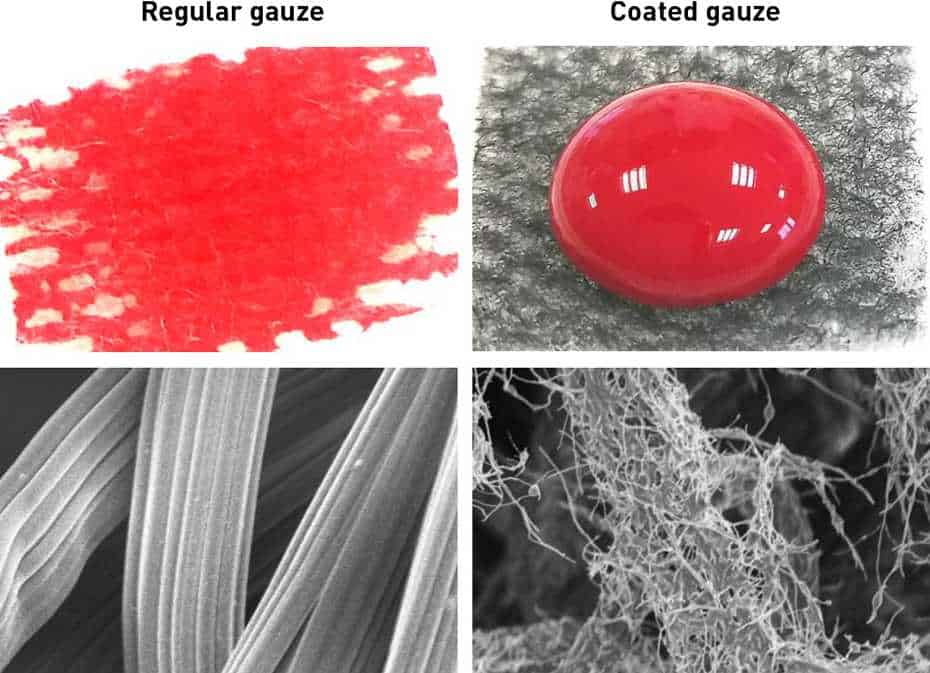
When a nasty pimple got infected on my right thigh, I had to go to the doctor every morning for a week to sanitize the wound and change bandages. Every time the doctor pilled off the gauze, I would hold my breath in expectation of the needle-like painful sensation. Fortunately, for all of us, this experience might become a thing of the past.
Dimos Poulikakos, the head of the Energy Science Center (ESC) at ETH University in Zurich, Switzerland, was experimenting with various superhydrophobic materials — which are extremely effective repelling liquids — in order to design a blood-repelling coating for heart-lung machines and other medical devices.
However, completely by accident, Poulikakos and colleagues at ETH and the National University of Singapore came across a totally new practical application. One of the materials they toyed with repelled blood as intended, but also promoted clotting.
“We did not actually plan this, but that is just how science works sometimes: you start researching one thing and end up somewhere else,” Poulikakos said in a statement.
These dual-properties make the material unsuitable for blood pumps on other sensitive medical devices but make it ideal as a bandage that can be removed easily without causing secondary bleeding.

In animal tests on rats, the researchers showed that a conventional cotton gauze coated with the new material — a mix of silicone and carbon nanofibers — not only triggered blood clotting but also had antibacterial properties. Due to the liquid repelling properties, bacteria have trouble adhering to the surface of a wound.
“With the new superhydrophobic material, we can avoid reopening the wound when changing the bandage,” Athanasios Milionis, a postdoctoral researcher in Poulikakos’s group, said in a statement. “Reopening wounds is a major problem,” he continues, “primarily because of the risk of infection, including from dangerous hospital germs – a risk that is especially high when changing bandages.”
In the future, bandages coated with the blood-repelling material could find their way in emergency rooms but also household use as plasters.
The findings were reported in the journal Nature Communications.


